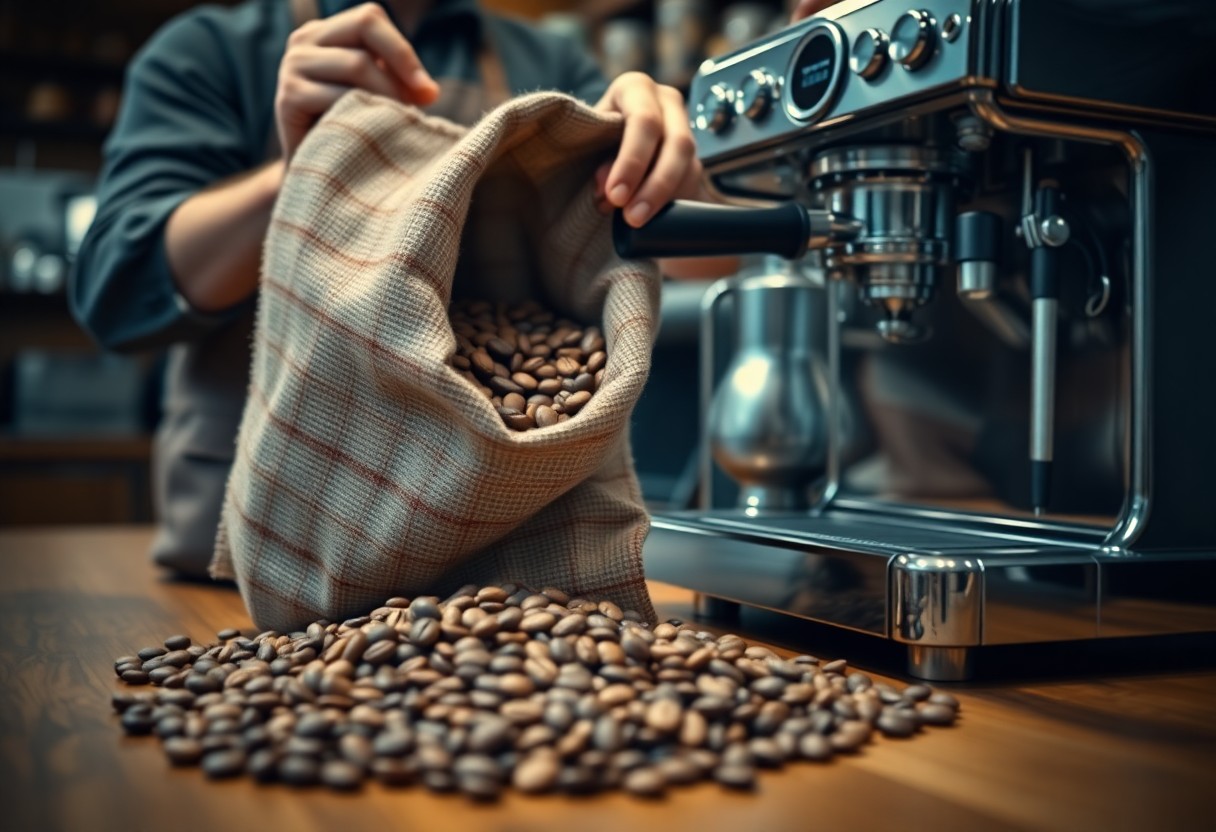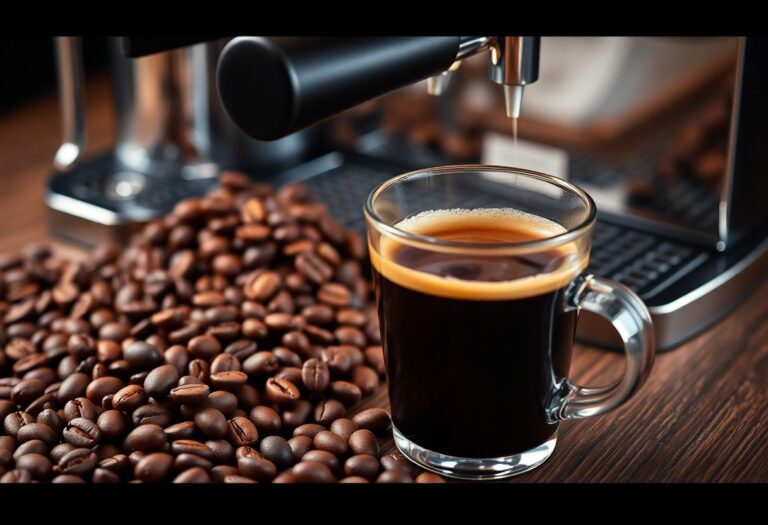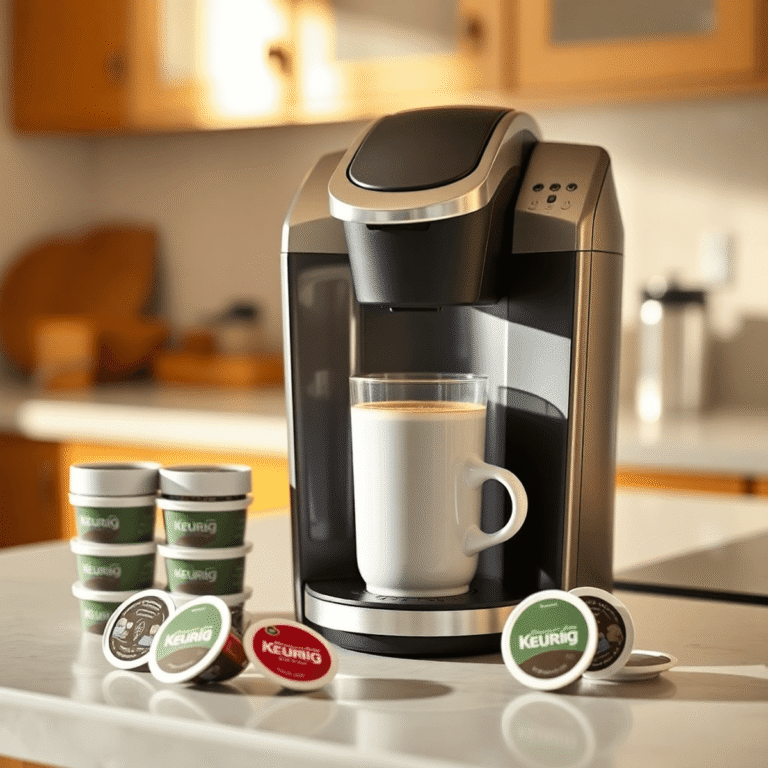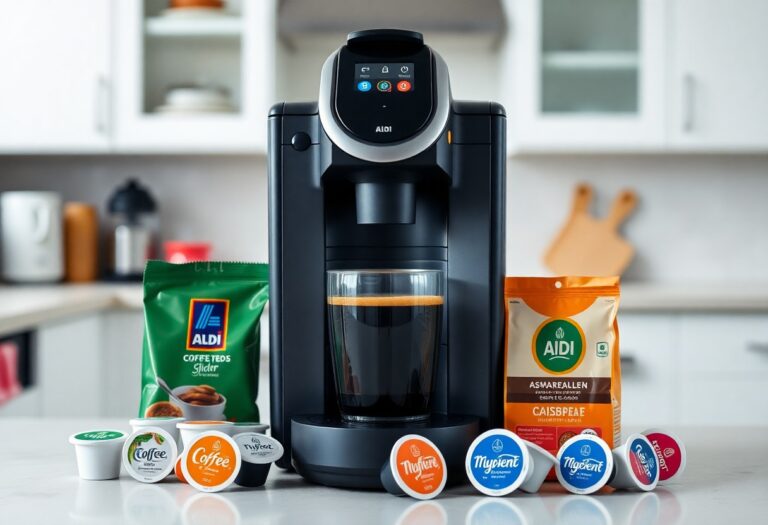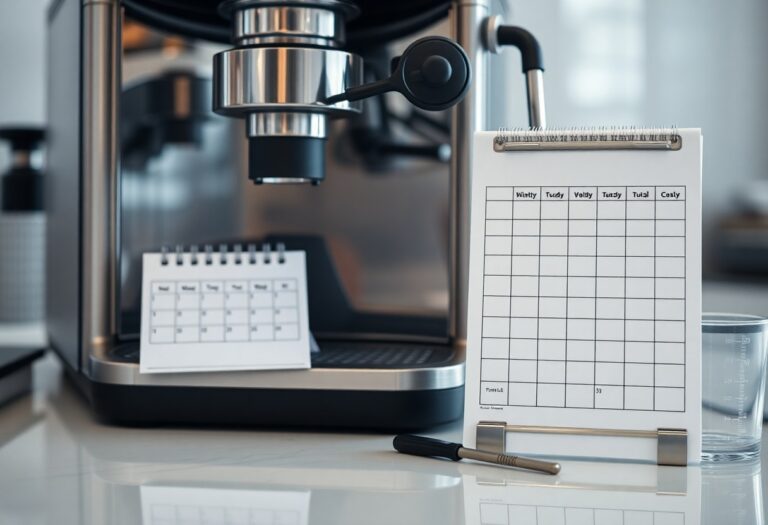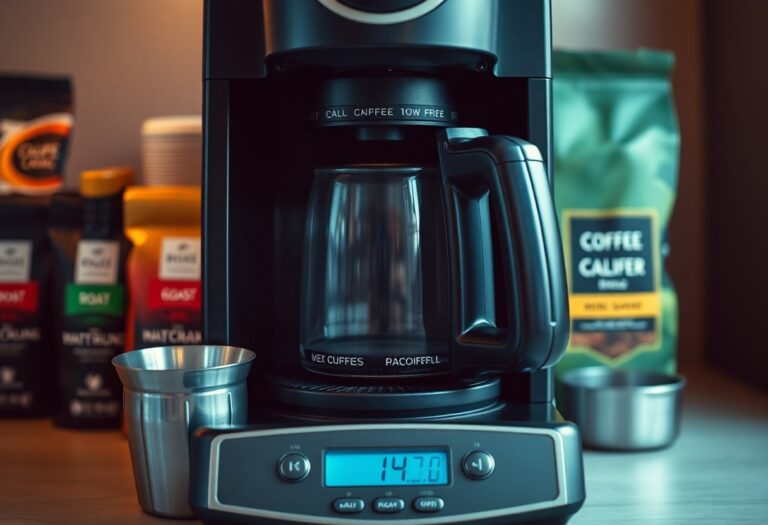What Coffee Goes in an Espresso Machine – Loading Guide
This guide will help you understand the types of coffee beans best suited for your espresso machine to elevate your coffee experience. You’ll learn about the ideal grind size, the importance of freshness, and how different blends can impact the flavor of your shot. By selecting the right coffee, you’ll ensure a rich, aromatic espresso that delights your senses. With this insight, you can confidently load your machine and enjoy barista-quality brews from the comfort of your home.
Key Takeaways:
- Use coffee beans that are specifically labeled for espresso, as they are often roasted darker to enhance flavor extraction.
- Freshly ground coffee beans yield the best results; grind the beans just before brewing for optimal taste.
- The ideal grind size for espresso is fine, resembling table salt, to ensure proper extraction during brewing.
- Choose a coffee blend or single origin that matches your taste preference, whether it’s fruity, nutty, or chocolatey notes.
- Maintain consistency by using the same weight of coffee each time, typically around 18-20 grams for a double shot.
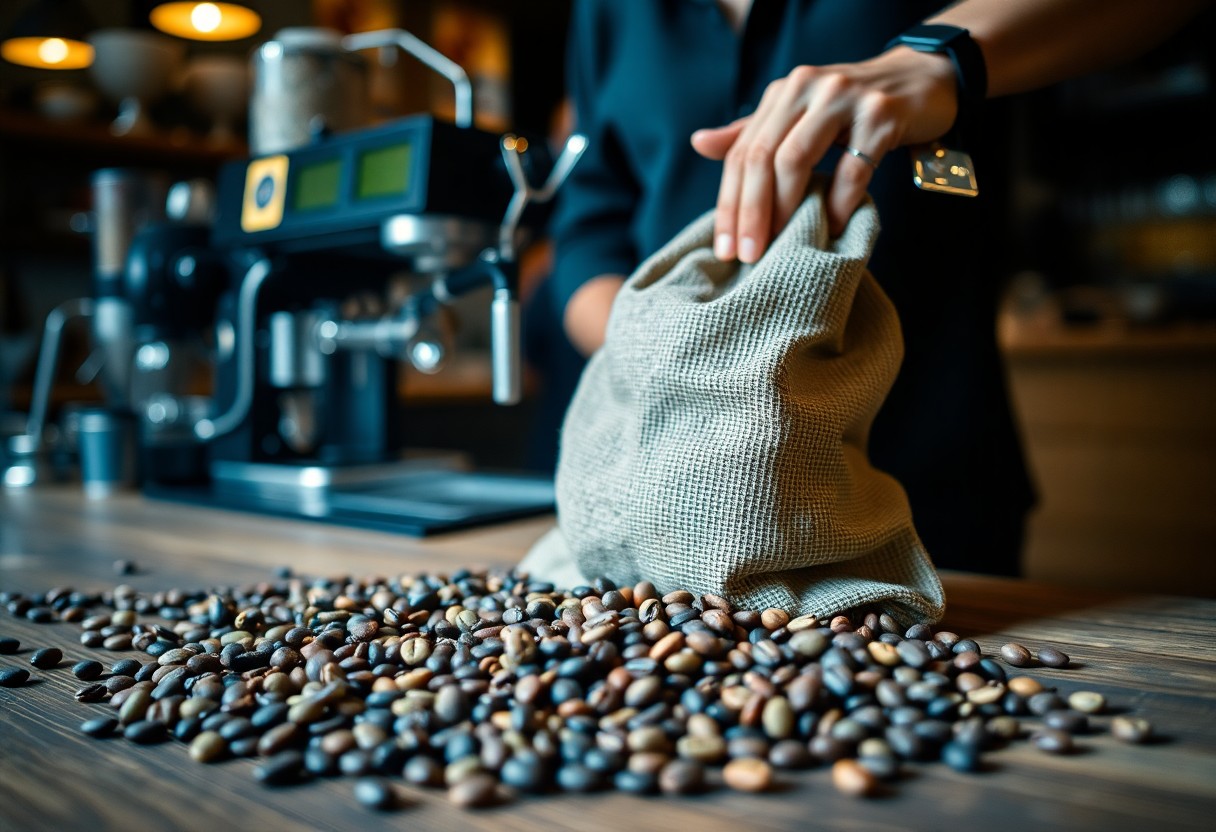
Selecting the Perfect Beans for Espresso
Choosing the right coffee beans is fundamental to achieving a fantastic espresso shot. Look for beans specifically labeled for espresso as they usually undergo a darker roast, enhancing the depth of flavor and body you desire. In addition to roast level, consider the origin of the beans, as different regions provide distinct flavor profiles that can elevate your espresso experience. Pay close attention to the grind size too; beans need to be finely ground for optimal extraction under the pressure of an espresso machine.
Arabica vs. Robusta: The Great Debate
Arabica and Robusta beans each bring unique characteristics to your cup. Arabica beans are often considered the superior choice for espresso due to their complex flavors and aromatic qualities. In contrast, Robusta beans provide a stronger, harsher taste and higher caffeine content, making them ideal for achieving a rich crema. The choice between the two ultimately depends on your personal preference and the flavor profile you wish to achieve.
Freshness Matters: Time from Roast to Cup
Freshness of your coffee beans significantly impacts the taste of your espresso. Ideally, you should use beans within 2-4 weeks of their roast date for the best flavor and aroma. Over time, coffee beans oxidize, losing their necessary oils and resulting in dull, flat flavors that can ruin an espresso shot. Storing your beans properly in an airtight container away from light and heat can help preserve their freshness and ensure an exceptional espresso experience.
Beans lose their peak flavor shortly after roasting due to a process called degassing, where carbon dioxide escapes and affects the overall profile. Within the first week, aromas are most vibrant, leading to an espresso with pronounced flavors and a beautifully integrated crema. After about two weeks, the beans start to lose their lively characteristics, and any subtle notes diminish quickly. Following the two-to-four-week rule and focusing on proper storage can dramatically enhance your espresso-making journey, delivering a consistently rich and enjoyable cup each time.
Grinding Coffee for Optimal Extraction
Achieving the best espresso experience hinges on more than just the beans you choose; it’s equally about how you grind those beans. A precise grind unlocks the full potential of their flavors and aromas, ensuring optimal extraction. Fine grind coffee is vital for espresso machines, vitally creating a dense puck that allows for a rich, aromatic shot with a thick crema. The right grind consistency can transform your espresso from decent to truly outstanding.
The Science of Grind Size: Fine vs. Coarse
Grind size dramatically influences the extraction process. Fine grind coffee allows water to flow through slower, extracting oils and flavors more effectively, while a coarse grind results in under-extraction, yielding a sour taste. Ideally, your espresso should feature a fine consistency, similar to table salt, which promotes a perfect balance of flavor, crema, and body.
Equipment Essentials: Burr vs. Blade Grinders
Choosing the right grinder is just as important as selecting your coffee beans. Burr grinders provide a uniform grind, vital for consistency and quality. In contrast, blade grinders chop beans unevenly, leading to inconsistent extraction. If you’re serious about your espresso, investing in a high-quality burr grinder will significantly enhance your brewing experience.
Burr grinders come in two types: flat and conical. Both types crush the beans into uniform particles, which is vital for maintaining a consistent extraction rate during brewing. A flat burr grinder offers precision, producing consistent sizes, while a conical burr grinder is generally quieter and less messy, handling oily beans better. Investing in a burr grinder means you’re prioritizing quality in your coffee preparation, which directly translates to better-tasting espresso shots with richer flavor profiles.
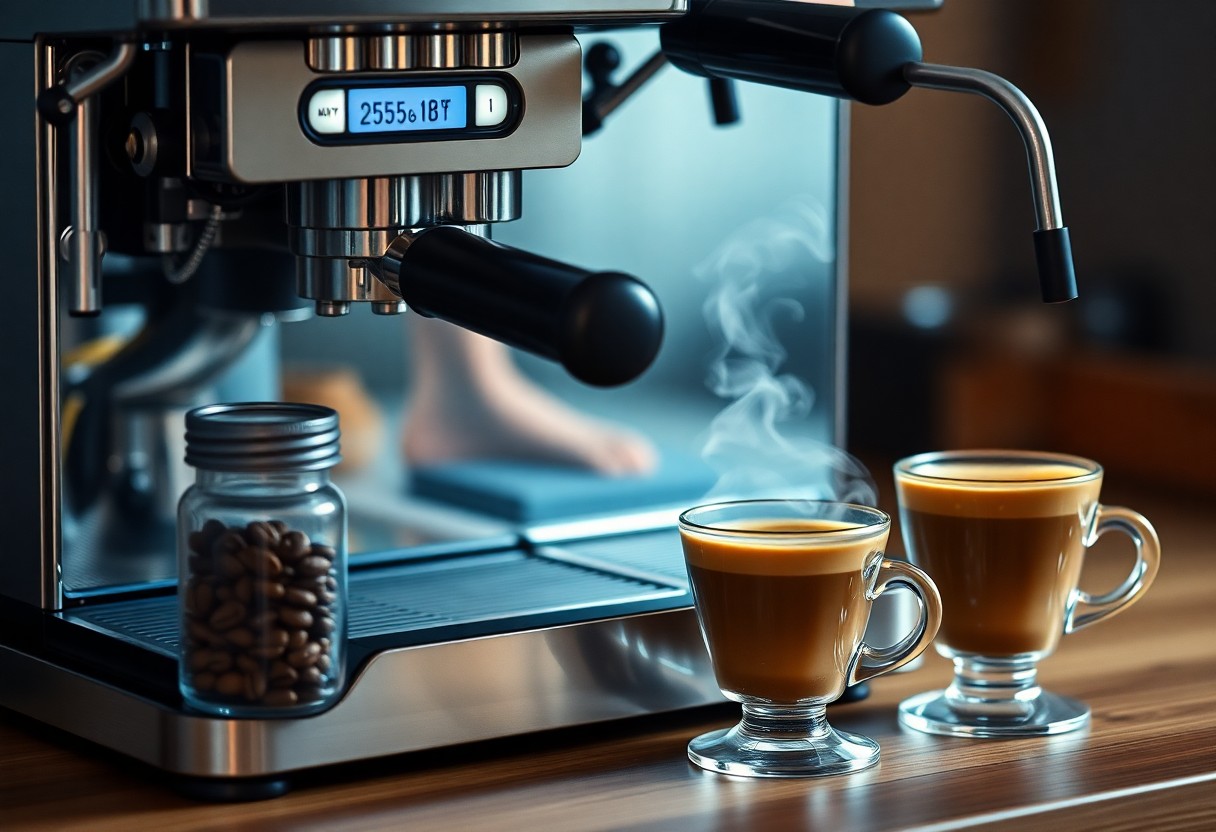
The Importance of Coffee Dose in Espresso Shots
Mastering the coffee dose significantly impacts the extraction process, ultimately shaping the flavor and quality of your espresso shots. A well-measured coffee dose ensures optimal pressure and water distribution during extraction, allowing you to achieve that perfect balance of flavors and aromas. Getting the dose right means your espresso will have a rich, full-bodied taste rather than being over-extracted and bitter or under-extracted and sour. As you refine your skills, experimenting with dose sizes becomes a vital part of your espresso journey.
Measuring Precision: grams per shot
Precise measurement of coffee dose significantly influences the consistency and quality of your espresso. Typically, a single shot of espresso requires around 7 to 9 grams of finely ground coffee, while a double shot demands about 14 to 18 grams. Investing in a quality digital scale can enhance your accuracy, enabling you to consistently reproduce your best shots effortlessly. Adjusting your coffee dose can yield varying flavor profiles, so measuring each time ensures that every cup you brew is a delight.
Adjusting Dose for Flavor Balance and Strength
Fine-tuning your coffee dose is important for achieving flavor balance and strength in your espresso. You can increase the dose for a more intense, robust shot or reduce it for a lighter, more delicate cup. Each adjustment alters the extraction levels, resulting in subtle shifts in taste and aroma. For instance, increasing the dose by just 0.5 grams can yield a noticeable difference, enhancing sweetness or body. Gradual changes allow you to pinpoint your ideal flavor profile, bringing out the best of your coffee beans.
When you adjust the dose, consider the innate characteristics of the coffee beans you are using. Lighter roasts benefit from slightly higher doses, as they often possess more acidity, and you’ll want to counteract that with a richer extraction. Conversely, darker roasts may require a lower dose to prevent overwhelming bitterness. Continually refining your dose helps you achieve a nuanced espresso that feels tailored to your palate. Conducting tastings at different doses will empower you to find your perfect balance and turn your espresso into a personal masterpiece.
Water Quality: The Unsung Hero of Espresso
In your quest for the perfect espresso, water quality often takes a backseat, but it deserves your attention. The mineral composition, temperature, and cleanliness of the water you use can significantly influence the overall taste and aroma of your espresso. The balance of minerals can enhance the extraction process, while impurities can lead to off-flavors. Prioritizing high-quality water will elevate your espresso-making experience and ensure consistency in flavor profiles.
Mineral Content and Flavor Impact
The mineral content of your water plays a key role in shaping the final taste of your espresso. Ideal water for espresso typically contains a balance of calcium, magnesium, and sodium, which can promote a better extraction. For instance, higher calcium levels can enhance sweetness, while magnesium contributes to mouthfeel. Conversely, too much sodium can overpower the flavor, leading to a less enjoyable shot. Measuring and adjusting your water’s mineral profile will enable you to achieve a more refined espresso experience.
Hardness vs. Softness: Finding the Right Balance
The hardness or softness of your water indicates its mineral content and can heavily affect extraction. Soft water lacks vital minerals, which can result in under-extraction and a sour taste. On the other hand, excessively hard water can lead to over-extraction, producing a bitter and unpleasant flavor. Striking a balance is vital: a water hardness around 70-150 ppm allows the beneficial minerals to extract flavors without overwhelming your espresso.
Finding that sweet spot between hardness and softness means testing your water quality to achieve optimal flavor extraction. Aim for a total hardness around 100 ppm as a general guideline. If you’re using tap water and it’s too soft or hard, consider using a water filtration system or a specialty water for espresso. Many coffee aficionados swear by dedicated espresso water with tailored mineral content, ensuring the optimal flavor and aroma with every shot. Prioritizing water quality is not just a minor detail; it’s a fundamental aspect of espresso perfection.
Brewing Techniques That Elevate Your Espresso
Enhancing your espresso relies heavily on incorporating advanced brewing techniques. Adjusting factors like grind size, extraction time, and water temperature can drastically change the flavor profile. For a deeper dive, check out Espresso 101: How to Adjust Dose and Grind Setting …. Mastery of these elements allows you to create well-balanced shots, ensuring that every cup you serve is nothing short of exceptional.
Pressure and Temperature: The Dynamic Duo
| Pressure | Optimal pressure for espresso extraction is typically around 9 bars. Too much pressure can lead to bitter flavors, while too little can result in sour notes. |
| Temperature | Water temperature should be maintained between 90-96°C (194-205°F) for optimal flavor extraction, allowing for a sweet and balanced shot. |
Timing: The Critical Factor for Consistency
Timing directly impacts the quality of your espresso shots. Aim for an extraction time of 25-30 seconds for a balanced shot; anything outside of this window can produce unfavorable results. Monitoring your extraction time allows you to fine-tune the process, ensuring consistency in flavor and texture.
Developing a consistent timing routine is vital for producing high-quality espresso. Track how various factors like grind size, coffee freshness, and tamping pressure influence extraction time to dial in your technique. This precision enables improved results and helps cultivate your palate for identifying subtle flavor differences, ensuring that every shot lives up to your expectations.
Conclusion
So, as you explore what coffee goes into your espresso machine, selecting high-quality beans with the right roast and grind is necessary for crafting your perfect shot. Pay attention to blends and single-origin options that suit your palate. To enhance your espresso-making skills, check out this guide on How to Make an Espresso. By refining your process, you’ll enjoy a superior coffee experience that elevates each cup.
FAQ
Q: What type of coffee beans are best for use in an espresso machine?
A: The best type of coffee beans for an espresso machine are typically dark roasts, as they have a bold flavor that stands up well to the brewing process. However, medium roasts can also work well, especially those labeled as espresso blends. Look for beans that are specifically ground for espresso, which have a finer texture to allow for optimal extraction during brewing.
Q: Should I use pre-ground coffee or grind my own beans for espresso?
A: While pre-ground coffee can be convenient, grinding your own beans just before brewing tends to yield a fresher and more flavorful cup of espresso. If you choose to grind your own, aim for a fine grind size that resembles table salt to ensure proper extraction in the espresso machine.
Q: How much coffee should I use for a single shot of espresso?
A: For a single shot of espresso, approximately 7 to 9 grams of coffee is recommended. For a double shot, you should use around 14 to 18 grams. It’s important to accurately measure your coffee and adjust according to your taste preferences and the specific machine you’re using.
Q: How does the roast date of coffee beans affect espresso quality?
A: The roast date is significant as fresher beans usually provide a more vibrant and rich flavor profile. Ideally, you should aim to use coffee beans that have been roasted within the last two to four weeks for the best espresso experience. After this period, the flavors may begin to deteriorate, resulting in a less satisfying shot.
Q: Can I use flavored coffee in an espresso machine?
A: Yes, you can use flavored coffee in an espresso machine, but it’s worth noting that the flavor intensity might be more subdued compared to traditional espresso. Flavored coffees often contain oils and additives that could impact the machine over time, so it’s wise to clean your equipment regularly if you choose to use them.

